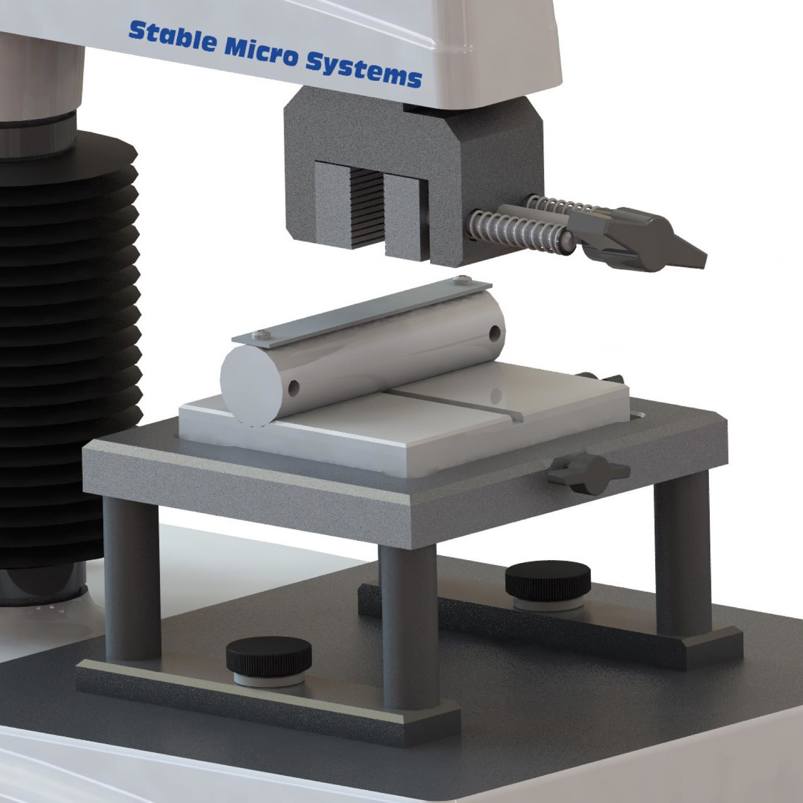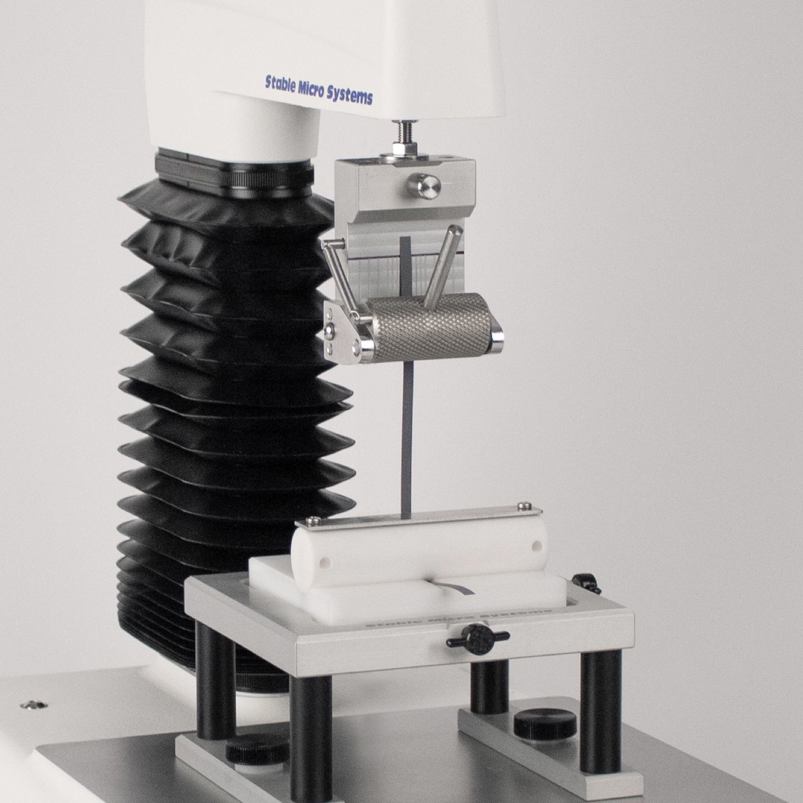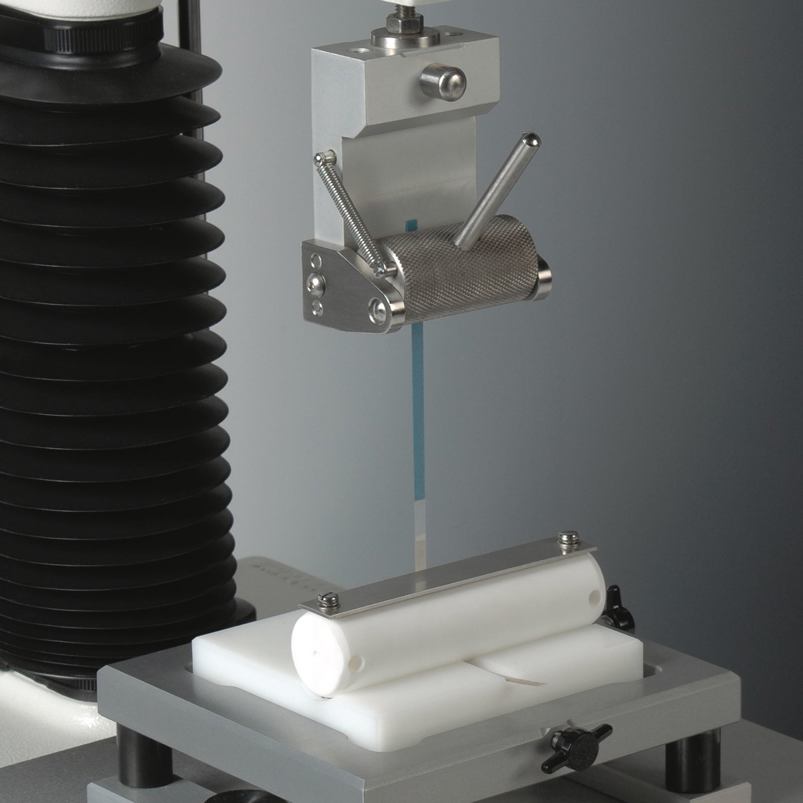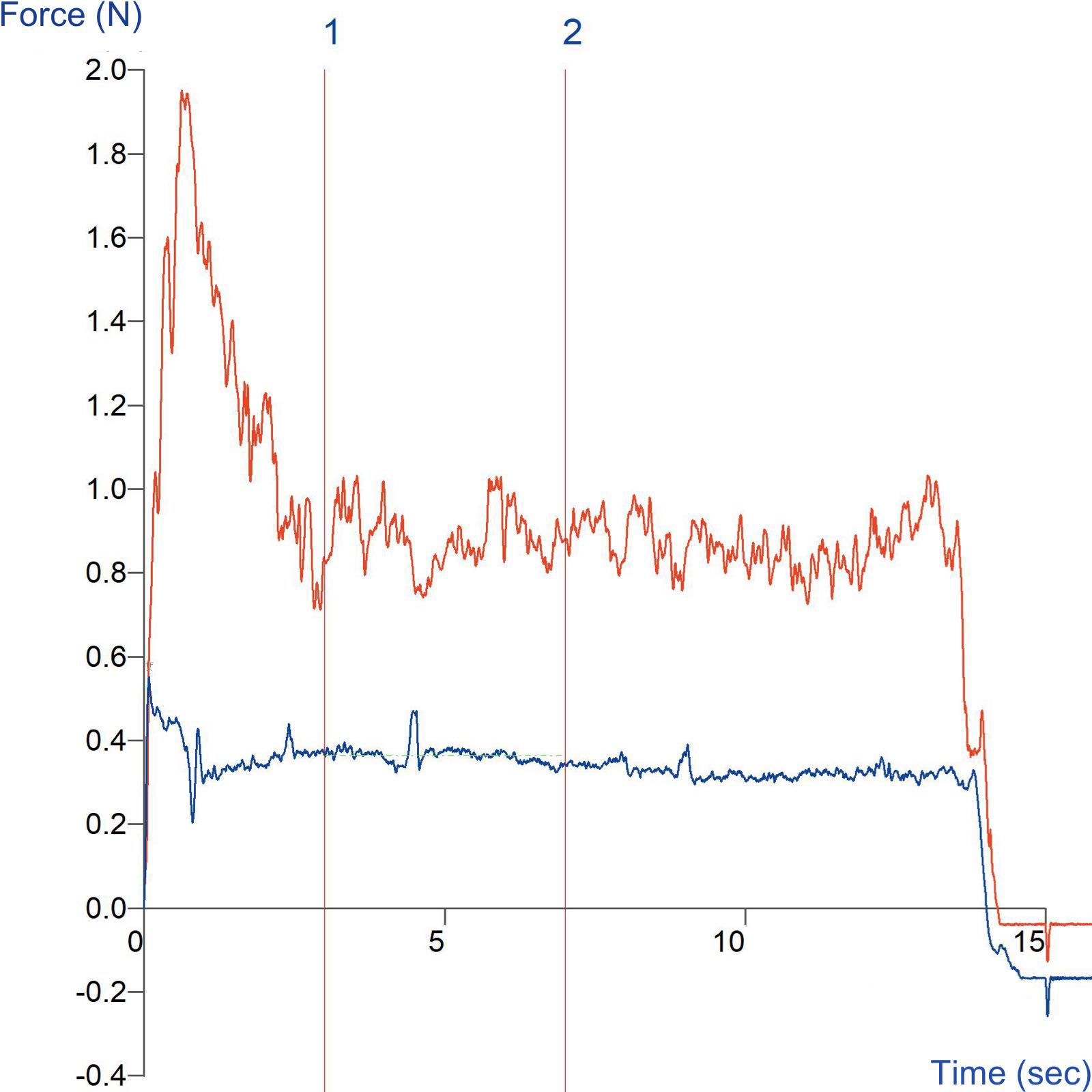Product overview
Abrasive materials are widely used across a variety of industries, such as dentistry, for polishing, grinding, honing, and other similar processes. The efficacy of these materials relies on their frictional properties, which can be calculated as the force required to draw the material across a given surface. Assessment of these properties will allow manufacturers to evaluate the suitability of their products for a specific use. The test results will also highlight differences between grades or brands of abrasive materials.
The Abrasion Test Rig analyses the frictional properties of a wide range of materials such as sandpaper, dental abrasive strips and flexible nail files, enabling manufacturers to highlight strengths, weaknesses and variations in product lines and materials.
Prior to performing the test, a sample of the abrasive material is held in place in a self-tightening grip. As the test is carried out, the arm of the Texture Analyser draws the sample under and around a cylinder at 90 degrees and the force required to pull the material is recorded. The cylinder material is customer specific according to the substrate over which the sample is required to abrade. Exponent Connect software is then employed to analyse the multi-peak force profiles obtained and apply special calculations to evaluate the frictional properties of the material. For coarse samples a wider fluctuating force band will be recorded, while for the finer materials a narrower force band can be expected.
As well as providing an accurate measurement of the frictional properties of the material, the results recorded can also be used to evaluate the stick/slip characteristics of the abrasive sample. This can be achieved by calculating the force difference between the maximum and minimum peaks obtained.
How does the Abrasion Test Rig work?
Ideal sample form
Narrow strips of material that can be gripped in order to pull from under a ceramic roller thereby measuring the friction between the two surfaces.
Benefits and limitations
- Sample channel limited width
Optional extras
Replacements are available for the ceramic friction cylinder, if required.
Technical information
Installation
Full installation instructions are provided within the Education Zone of the latest Exponent/Connect software version and on the technical information sheet accompanying this product.
Chemical compatibility
Stable Micro Systems probes and attachments are commonly made from four materials: anodised aluminium (AA6082 T6), stainless steel (316 T), Delrin (acetyl copolymer) and Perspex (polycarbonate).
In general use, probes and attachments made from these materials will be suitable for testing food products and inert non-food materials.
The four materials listed above are not universally resistant to all types of chemicals and as such the compatibility of the probe/attachment material with the product (to be tested) must be established to prevent damage to the probes and attachments. If the compatibility of the product with the probe is unknown to the customer then the chemical information about the product (Material Safety Data Sheet or Product Data Sheet) should be submitted to Stable Micro Systems. Stable Micro Systems will then assess the suitability of the probe/attachment material for use with the product and advise accordingly. If this advice is not sought then Stable Micro Systems will not accept liability for probes/attachments damaged by chemical attack from the product being tested.
Cleaning and maintenance
All probes and attachments may be cleaned in warm (or hand hot) water using a mild detergent. A soft brush may be used but abrasive cleaning aids should be avoided. Stable Micro Systems products should not be microwaved or cleaned in a dishwasher.
Screw threads should be lightly lubricated after drying using a light lubricant, e.g. petroleum jelly, mineral oil. This will aid the fitting and unscrewing of the item. Each component of a probe or attachment should be wrapped separately when stored, to avoid scratching or chipping. This will safeguard against any unnecessary damage to the accessory.




